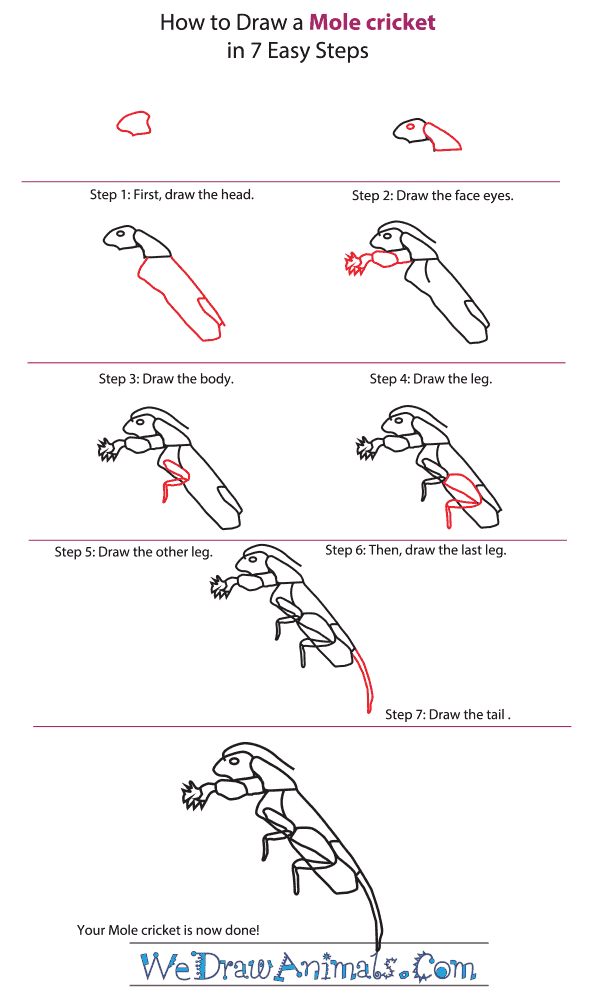In this quick tutorial you'll learn how to draw a Mole Cricket in 8 easy steps - great for kids and novice artists.
The images above represent how your finished drawing is going to look and the steps involved.
Below are the individual steps - you can click on each one for a High Resolution printable PDF version.
At the bottom you can read some interesting facts about the Mole Cricket.
Make sure you also check out any of the hundreds of drawing tutorials grouped by category.
How to Draw a Mole Cricket - Step-by-Step Tutorial
Step 1: First, draw the cricket's head. It is in the shape of a chefs hat
Step 2: Draw the eye and the neck. Draw a small circe to make the eye and draw the neck coming out of the right side of the head
Step 3: Next, draw the body coming down from the neck. The body is a rough rectangle with a small section at the bottom right carved out
Step 4: Draw the leg, one section at a time. Draw each section starting with the one closest to the body.
Step 5: Draw a leg in the top portion of the body. It is curved and is thicker where it meets the body.
Step 6: Draw another larger leg beneath the first leg in the same way, but slightly bigger
Step 7: Draw the tail as one slightly curved stick coming down from the end of the body
Interesting Facts about the MOLE CRICKET
The Mole Cricket is a member of the insect family and the scientific term for them is Gryllotalpa gryllotalpa. Another common name for this species is the European Mole Cricket. The word Gryllo means “cricket” and talpa means “mole.” They are native to Europe and have been introduced to the eastern United States.
Did you know?
- The animal was first documented in 1758.
- Males are 40 mm and females are 45 mm long.
- The females lays 100-350 eggs.
- Eggs hatch in 10-20 days.
- Females guard the babies for 2-3 weeks.
The cricket feeds on a wide range of crops and disrupts the ground with its burrowing task. In places where there are enough, it is considered a pest because it damages grains, legumes, grasses, potatoes, vegetables, beets, sunflowers, tobacco, hemp, flax and strawberries. It also is damaging to nurseries where plants may be killed from damages to roots of vines, fruit, and other trees. Preventative maintenance may entail plowing, treating the soil between crop harvests, trapping in winter, pesticides, baited poison, and ground fumigation. Mole Crickets are prized bait for catching catfish. In Britain, they are considered to be endangered, and there have been very few confirmed sightings.








